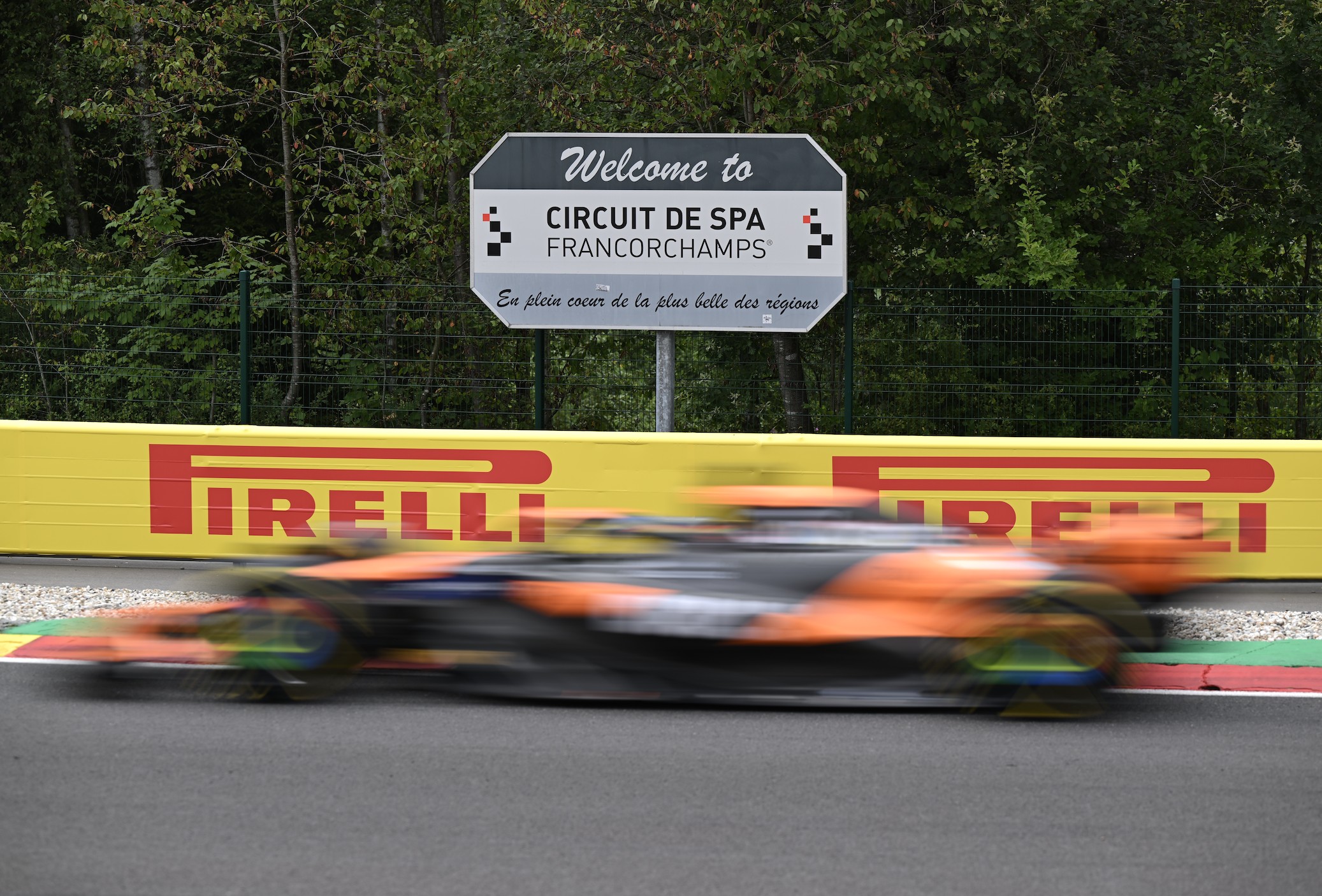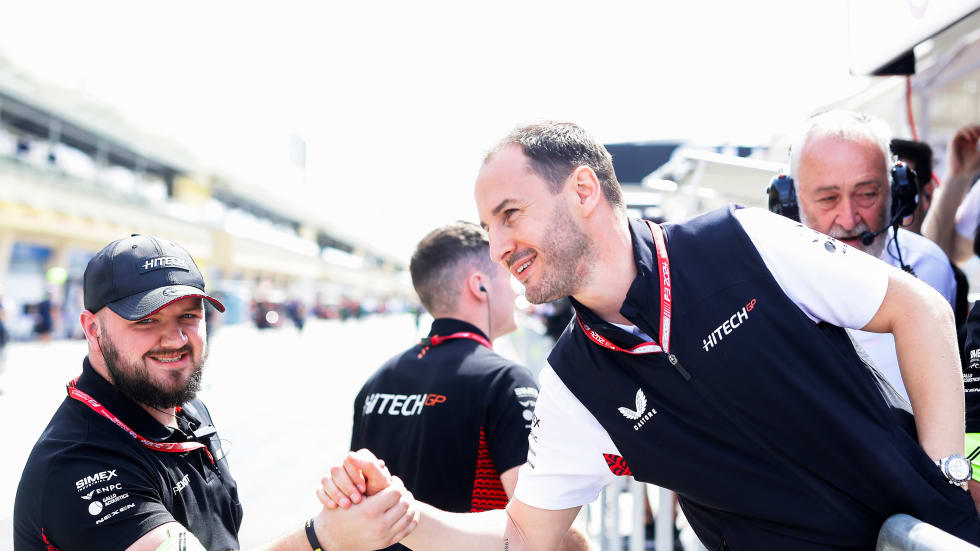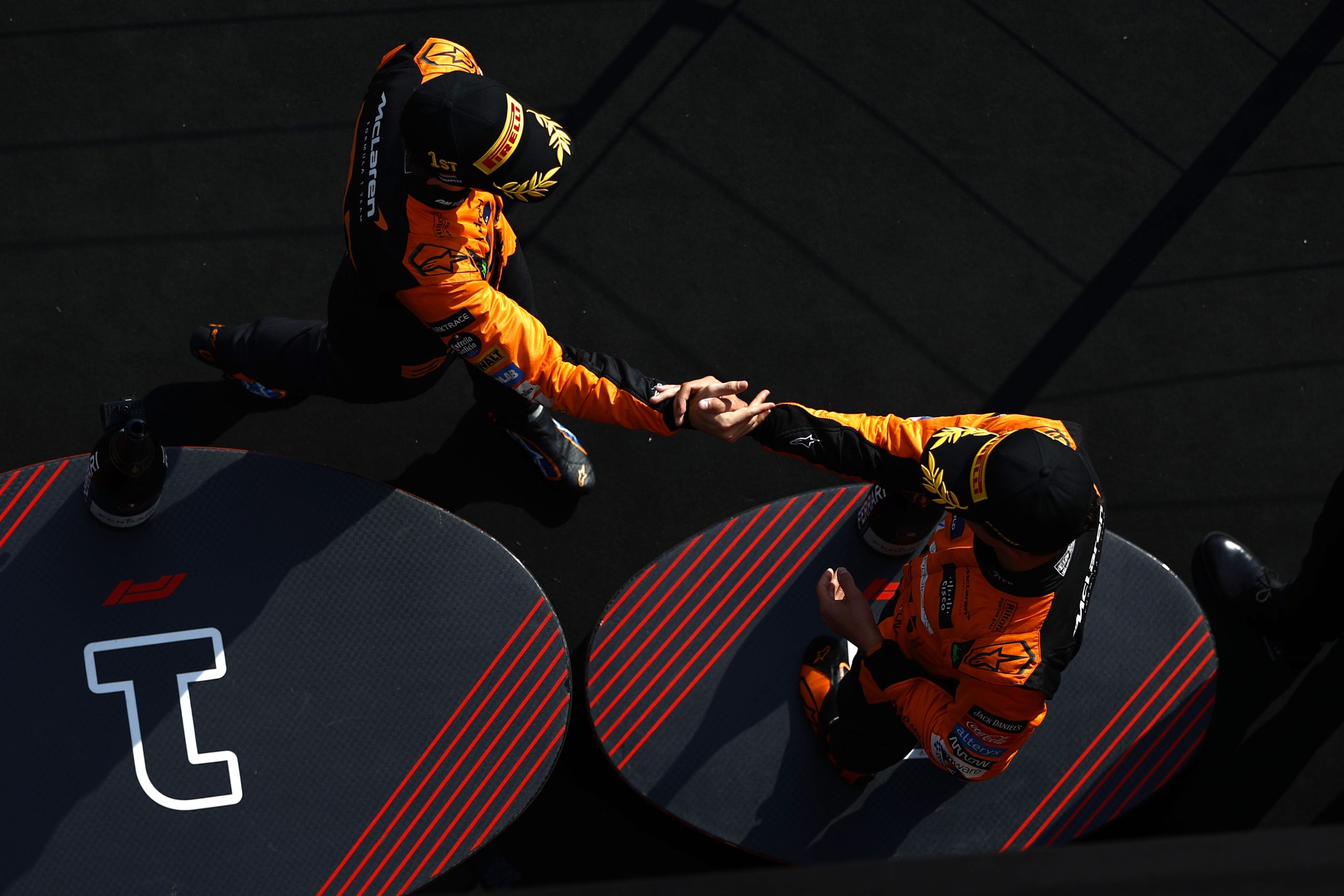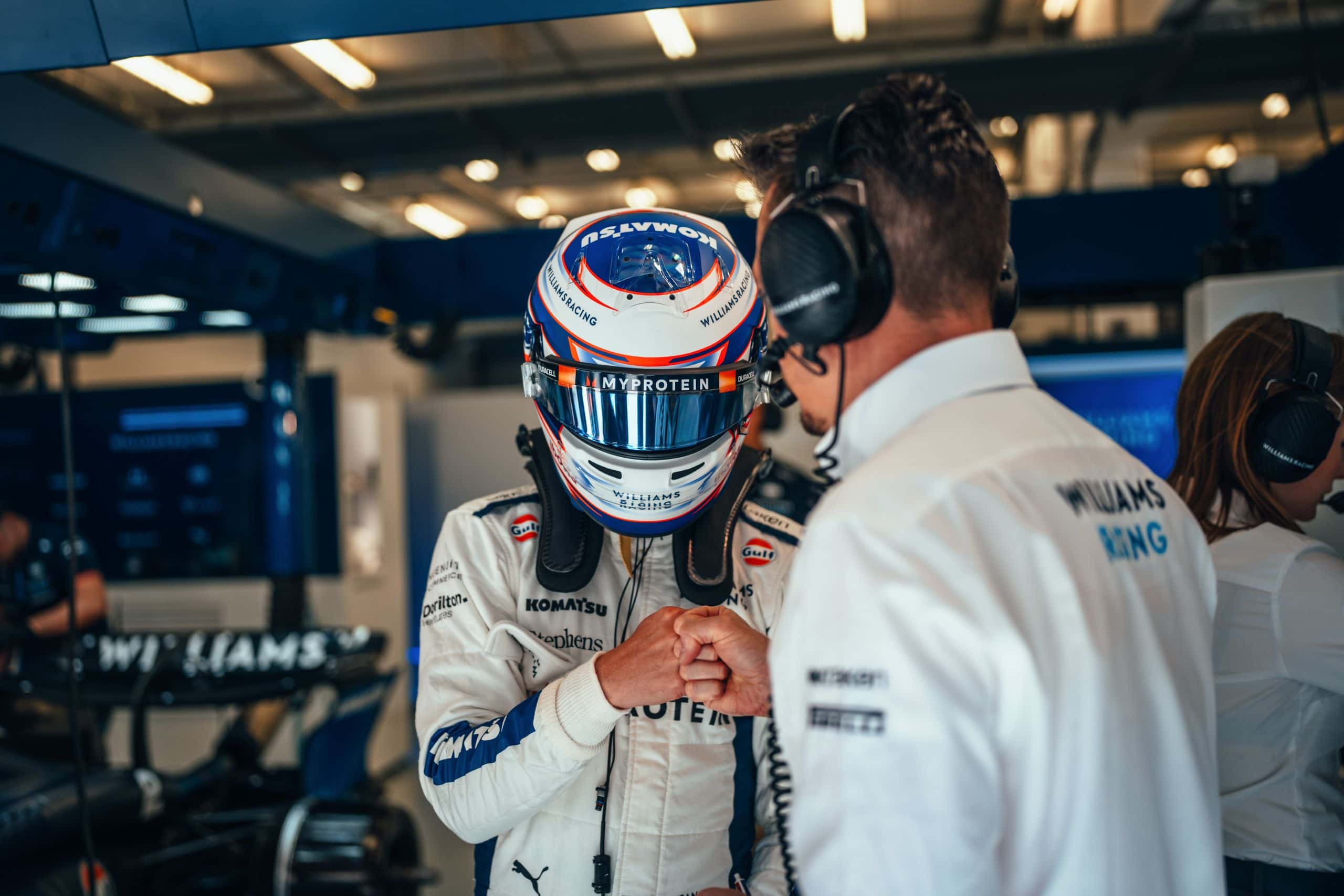Why Do They Race At Night In Singapore?
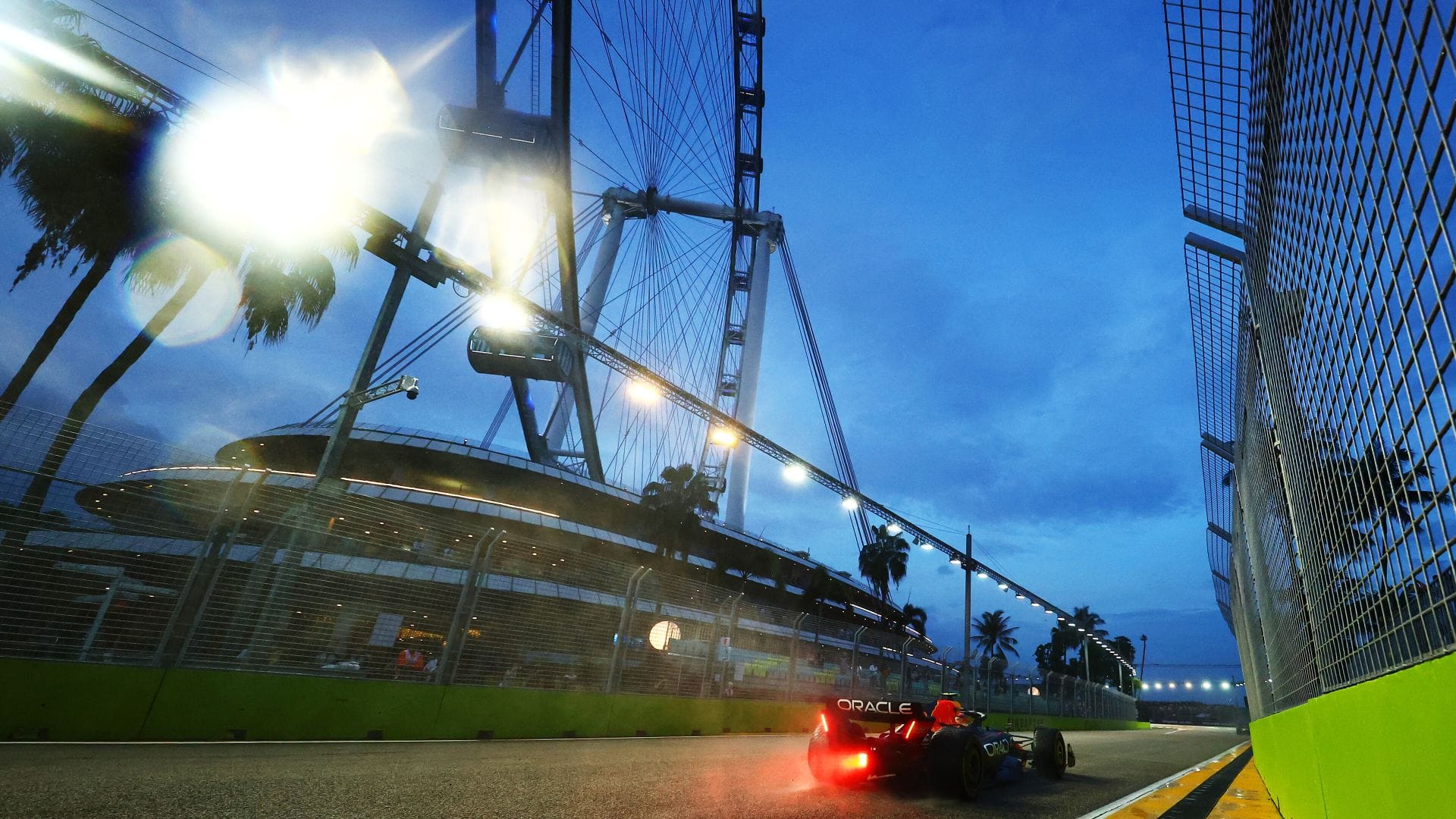
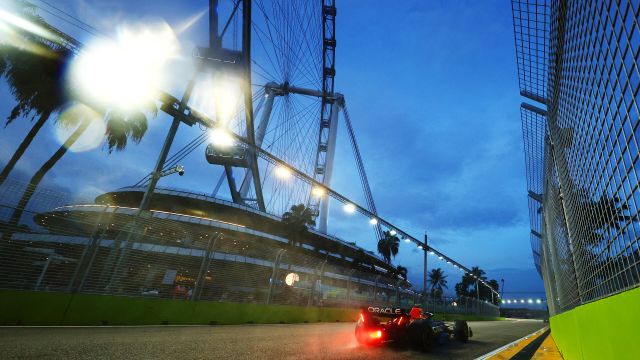
If you have ever watched F1 racing around the Lion City, you may have wondered, why do they race at night in Singapore? What is it that makes the city-state host these nocturnal events, setting it apart from many other racing venues around the world?
Night races in Singapore are held to avoid the daytime heat and to align with the broadcast timings of European audiences, thereby maximizing viewership and providing a spectacular under-the-lights experience that leverages the beautiful night skyline of Singapore.
In this article, we will delve deeper into the reasons behind Singapore’s choice to hold races at night, exploring the benefits and the unique atmosphere it creates. From understanding the climatic reasons to the strategic advantages in terms of global viewership, we will unpack the phenomenon step by step. We will also touch upon the technical aspects that make night racing in Singapore not just possible, but a grand spectacle that attracts audiences worldwide.
Key Takeaways
- The Singapore GP is held at night for better broadcasting times, cooler temperatures, and a captivating visual experience.
- Successfully hosting a night race involves intricate lighting systems to ensure driver safety and sustainability.
- The increasing trend of F1 night races reflects the unique blend of sports, entertainment, and technology in these events.
Singapore’s Formula 1 Grand Prix, unlike most other F1 events, takes place at night, creating a unique and stunning atmosphere that reflects the vibrant city-state. The Singapore GP was first held in 2008 and quickly gained fame as the original F1 night race, setting the stage for other circuits to follow suit. The decision to host the race at night was driven by multiple factors, including providing a favorable time slot for international television viewers, overcoming the sweltering daytime heat of Singapore, and showcasing the beauty of Marina Bay’s street circuit under the dazzling floodlights.
The transformation of the Singapore GP into a night race was no small feat. The lighting system needed to provide optimal visibility for the drivers while also focusing on safety and sustainability. Furthermore, the nighttime setting creates an unparalleled spectacle, capturing the attention of fans across the world. This fusion of sports, entertainment, and technology has helped solidify the Singapore GP’s position as one of the most popular and prestigious events on the Formula 1 calendar.
As the pioneer of F1 night races, Singapore has set a precedent that other circuits have since embraced. With a growing number of night races appearing on the F1 calendar, these events have established themselves as an essential aspect of the sport, offering a distinctive experience for viewers and drivers alike.
History of Night Racing in Singapore
Inception of the Idea
The idea of conducting night races in Singapore was first brought to light by Bernie Ecclestone, the cornerstone behind hosting the Singapore Grand Prix. The inaugural Singapore Grand Prix, held as Formula One’s first ever night race, took place in 2008 at the Marina Bay Street Circuit.
Initial Years
Before the introduction of night races, the Singapore Grand Prix has a rich history dating back to 1961, known as the Orient Year Grand Prix, held at the Thomson Road Grand Prix circuit. The name was changed to Singapore Grand Prix in 1966, shortly after Singapore’s independence. With racing history founded in the late 1960s, Graeme Lawrence won three consecutive races in 1969, 1970, and 1971. However, the event was discontinued after 1973, mostly due to safety concerns.
The revival of the Singapore Grand Prix in 2008 brought a new tradition of night racing to Formula One. Several reasons stand behind the decision of holding the race at night, such as local weather conditions, attracting global audiences, providing stunning visuals, and countering the heat and humidity of Singapore.
Over the years, the Singapore Grand Prix has evolved and expanded, and night races have become a prominent part of the F1 calendar. In 2015, a contract extension was signed to secure the Singapore Grand Prix in the F1 circuit until 2021, further enhancing its presence in the world of night racing. With its unique and innovative approach, the Singapore Grand Prix has paved the way for other night races in the world of Formula One.
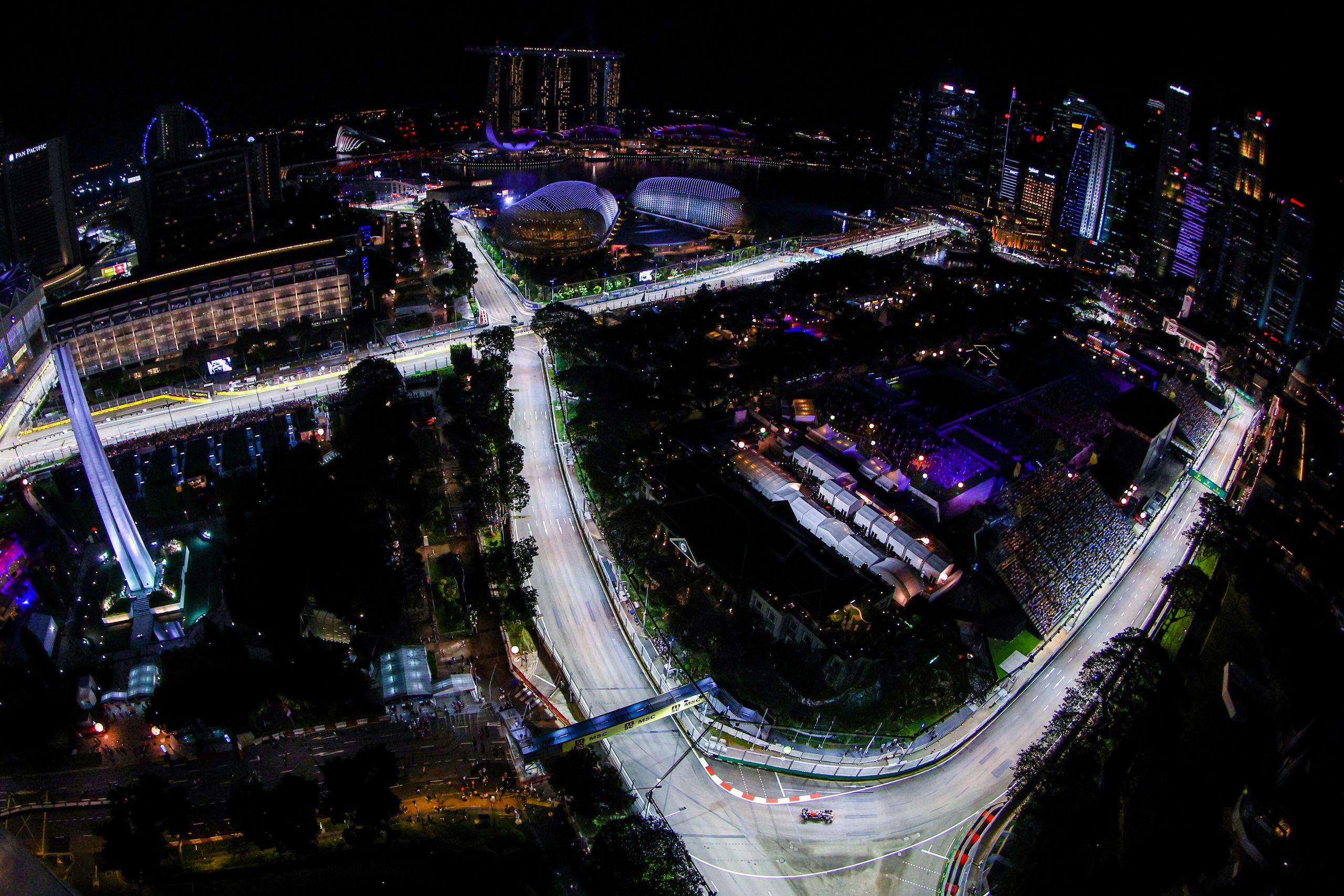
Understanding the Unique Nature of the Singapore GP
Circuit Details
The Singapore Grand Prix is held at the Marina Bay Street Circuit, which has been part of the Formula One World Championship since 2008. This race is not only the first night race in the championship but also the first street circuit in Asia designed for Formula One. The circuit length is approximately 5.063 km, and the race distance spans over 61 laps. The Marina Bay Street Circuit is known for its challenging and twisty layout, featuring 23 corners that test the drivers’ skill and endurance.
Safety Measures
Safety is a crucial aspect of the Singapore GP, including the implementation of various safety car protocols to ensure the wellbeing of drivers and spectators. One essential measure is the circuit’s illumination, which is achieved by employing around 1,600 light projectors to mitigate glare and ensure optimal visibility for the drivers. These projectors are strategically placed and aimed in such a way that they do not cause any visual disturbances for the racers.
The Marina Bay Street Circuit also boasts ample safety barriers and runoff areas to minimize the risk of accidents during the race. These measures include high-tech energy-absorbing barriers and advanced tire wall systems to protect drivers in case of collisions. A well-trained team of marshals and medical personnel stand ready to respond to any incident quickly, further contributing to the overall safety protocols at the Singapore GP.
Operational Challenges
Due to its unique nighttime setting and street circuit configuration, the Singapore GP poses distinct operational challenges for teams and drivers. The race takes place in hot and humid conditions, making it physically demanding for the racers and demanding excellent cooling systems in the cars. The high number of corners requires precise setups and tire management, with the drivers having to find the right balance between performance and tire wear.
Moreover, the illuminated circuit creates an unusual environment for the drivers, who must quickly adapt to changing light and shadow conditions as they navigate the track. Despite these hurdles, the Singapore GP remains a favorite among drivers and fans alike, making it one of F1’s most important races.
Social and Economic Impact
Government Involvement
The Singapore Government, particularly the Singapore Tourism Board, plays an instrumental role in the organization and support of the Formula 1 Grand Prix held at night in the city-state. This major sporting event not only attracts thousands of spectators and international media coverage but also provides significant revenue and global exposure for Singapore. The government’s investment in hosting this night race aids in boosting income across various sectors, such as hospitality, transportation, and food & beverage industries.
Tourism Growth
Hosting the Formula 1 Grand Prix at night contributes to the growth of Singapore’s tourism sector. According to reports, the 11 races held so far in Singapore have brought in about S$1.4 billion in incremental tourism receipts, approximately S$130 million per year. This influx of tourists and global attention has elevated Singapore’s status as a world-class travel destination.
In addition to the revenue generated during the event, the night race also offers a unique experience for both local and international tourists, showcasing the city-state’s impressive skyline and modern infrastructure. The decision to hold the race at night comes with many strategic advantages, such as accommodating a larger international audience in different time zones and providing a visually stunning backdrop for the race.
Through government involvement and the support of the Singapore Tourism Board, the night race in Singapore continually bolsters the city-state’s economy and contributes to the growth of its tourism sector.
Controversies and Criticism
Discrimination Issues
The nighttime races in Singapore have garnered some controversy concerning discrimination issues, particularly in relation to racial harmony within the diverse population. With a mix of ethnicities such as Chinese, Malays, Indians, and others, Singapore strives to maintain a respectful and inclusive environment. However, instances of racism and prejudice have been reported in recent years, causing some concern amongst sociologists and minority groups like the Tamil and Malay communities.
In the context of the F1 night race, it is crucial to ensure that the local and international community involved in the event adheres to the principles of racial harmony. Some F1 fans have raised concerns that the highly competitive nature of the sport might exacerbate existing discrimination issues. Consequently, relevant authorities have been urged to address these issues to prevent any negative impact on the multicultural image of Singapore.
Feedback from F1 Community
The Formula 1 community, including the FIA and its former boss Bernie Ecclestone, has also provided varying feedback in response to the nighttime races in Singapore. While many view the races as a positive addition to the F1 calendar, others have criticized them for their perceived impact on racial harmony and potential discrimination.
These critics argue that the high-profile nature of the event, with many of its fans and participants hailing from diverse backgrounds, may inadvertently lead to instances of racism or prejudice. To mitigate these issues, the FIA and local organizers have implemented measures to promote inclusivity, ensuring that Singapore’s night race is an event that embraces and celebrates the diversity of the F1 community.
In conclusion, the controversies and criticisms surrounding nighttime races in Singapore primarily revolve around discrimination issues, as well as feedback from the F1 community. By addressing these concerns and adopting a proactive approach to fostering racial harmony, Singapore aims to maintain its commitment to multiculturalism and inclusivity while hosting the popular night race.
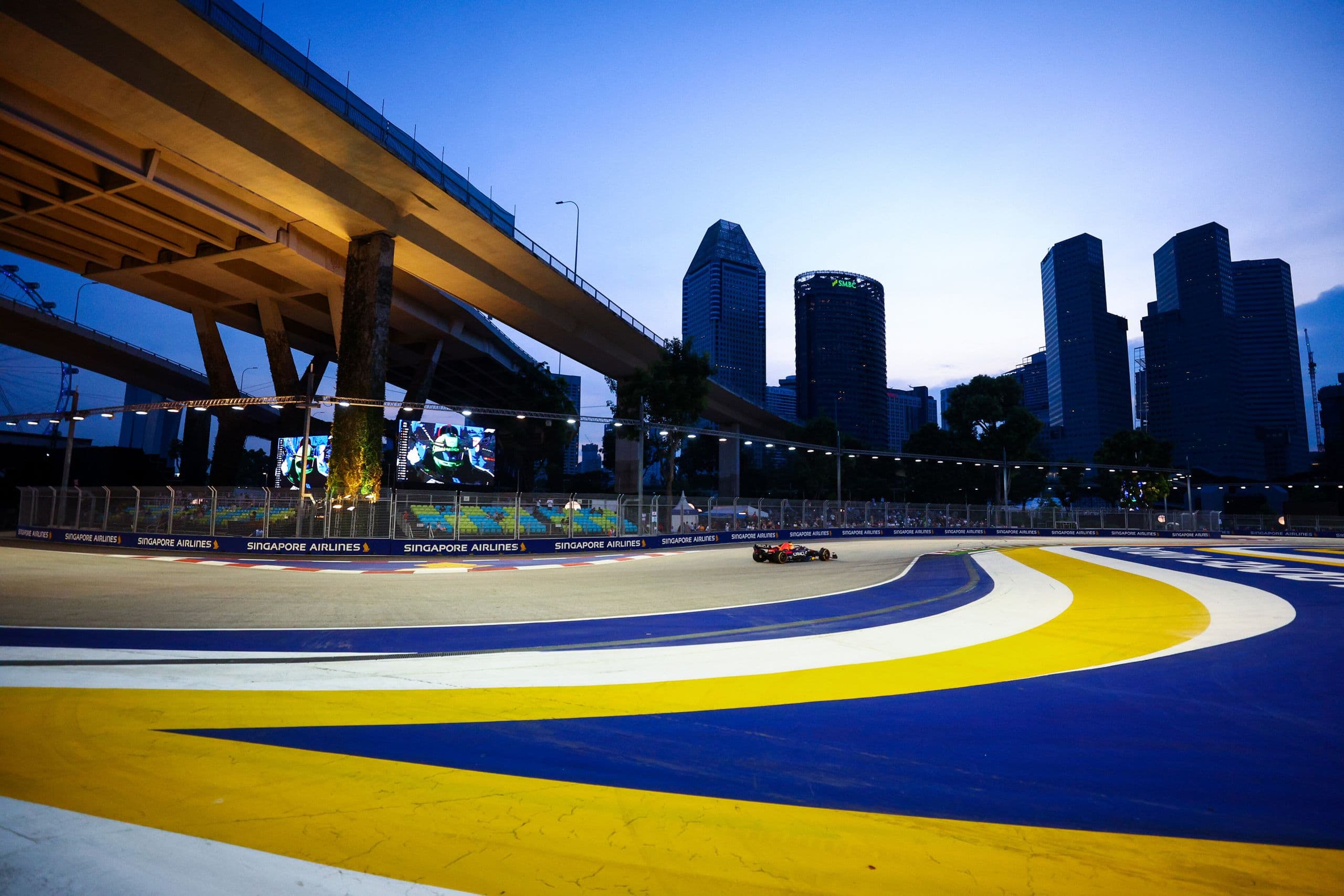
The Allure and Prestige of the Singapore GP Night Race
The Singapore GP has evolved into one of the most prestigious and unique races in the Formula 1 calendar. The first Formula 1 night race in history, it made its debut in 2008 at the stunning Marina Bay street circuit, capturing the attention of motorsport enthusiasts worldwide.
The historical background of the Singapore GP as the pioneer of night races in Formula 1 has greatly contributed to its allure. Organizers opted for night racing to cater to European TV audiences, ensuring prime-time broadcasting and higher viewership. Furthermore, night races offer cooler temperatures compared to the sweltering daytime heat, enabling better racing conditions for drivers and teams.
Over the years, the Marina Bay street circuit has gained a reputation for its challenging layout, tight corners, and breathtaking skyline, accentuated by the dazzling city lights. The intrigue of the circuit, coupled with the seductive backdrop of a modern city skyline, has established the Singapore GP as a must-attend event in the F1 calendar for fans and drivers alike.
A key element adding to this race’s prestige is its strategic location, as Singapore acts as a global business hub. The event attracts affluent individuals, corporate sponsors, and celebrities, creating an exclusive and glamorous atmosphere for race weekends.
The Singapore GP has truly carved its niche as the definitive F1 night race, successfully integrating elements of spectacle, challenge, and prestige. Its lasting impact on the Formula 1 world is a testament to its allure and enduring appeal within the motorsport community.
The Iconic Singapore GP: A Night Race Like No Other
The Singapore Grand Prix is a truly unique event in the world of Formula 1. Introduced in 2008, it has quickly become a fan favorite for its distinctive night race setting. The Marina Bay Street Circuit, set against the stunning backdrop of Singapore’s famous skyline, has cemented its place as one of the most exciting and visually impressive races on the F1 calendar.
One of the most notable features of the Singapore GP is that it takes place at night. The race is held under powerful floodlights that illuminate the entire circuit, providing a breathtaking spectacle for spectators and television viewers alike. Racing at night not only creates a visually stunning event, but it also addresses some practical concerns arising from the heat and humidity of Singapore’s tropical climate. By racing at night, the temperatures are more manageable for both drivers and the audience, ensuring a more enjoyable experience for all involved.
The Singapore Grand Prix holds a special place among other F1 races due to its unique combination of a night race taking place on a challenging street circuit. Unlike traditional race tracks, street circuits involve racing through the city’s streets, adding an extra layer of difficulty and excitement for the drivers. The tight corners and close proximity to the city’s skyscrapers make this race one of the most thrilling on the F1 calendar.
Furthermore, Singapore offers a distinctive blend of culture, cuisine, and entertainment, making it an attractive destination for F1 fans visiting from all corners of the globe. The exciting atmosphere and energy within the city during the race weekend adds to the overall allure of this world-renowned event.
In summary, the Singapore GP is an exceptional and iconic event like no other in Formula 1. Its visually spectacular night race, set against the stunning backdrop of the city’s skyline, combined with the challenging street circuit and vibrant atmosphere make it a truly unforgettable experience for fans and drivers alike.
The Challenges F1 Drivers Face at the Extreme Singapore Grand Prix
Humidity: The Silent Challenger at the Singapore GP
One of the most significant challenges that the Singapore Grand Prix presents to the drivers is its extreme humidity. The climate in Singapore is known for its high levels of humidity, which can have a considerable impact on both the drivers and their cars. Humidity affects the drivers by causing increased perspiration and dehydration, making it harder for them to maintain focus and optimal performance throughout the race. Additionally, the humid conditions can impact the cars’ cooling systems and aerodynamic performance, requiring teams to account for these factors in their race strategies.
How Drivers Prepare for the Humid Conditions
To cope with the extreme humidity, F1 drivers undergo specialized training regimes that focus on building endurance and resilience. They work closely with their trainers, physiotherapists, and nutritionists to develop comprehensive plans that include:
- Heat acclimatization training: By training in high-temperature environments, drivers become better prepared for racing in Singapore’s humid conditions.
- Hydration strategies: Proper hydration is crucial during the race to prevent dehydration. Drivers receive advice on fluid intake before, during, and after the race to ensure they maintain optimal hydration levels.
- Nutritional plans: F1 drivers must consume a carefully balanced diet tailored to their specific needs, which can include consuming electrolytes and other nutrients that help counter the effects of humidity.
The Impact of Humidity on the Race Dynamics
The humid conditions of the Singapore Grand Prix also have a notable impact on the race dynamics. High humidity can lead to increased tire wear, affecting the driver’s grip and control over the car. Teams must account for this factor when planning their pit stop strategies and tire selections. Cooling systems for brakes and engines must also be optimized, as the humidity heavily impacts their efficiency. Consequently, teams must carefully balance car performance and reliability, considering the unique challenges brought by the humid Singapore climate.
Spotlight on the Other F1 Night Races Around the World
Bahrain: The Desert Duel Under the Stars
Bahrain Grand Prix, held at the Bahrain International Circuit, adopted the night race format following Singapore’s successful introduction in 2008. Racing under the stars, the Bahrain Grand Prix offers a unique backdrop of the desert environment. The illuminated track contrasts the dark skies, providing a stunning visual spectacle for both drivers and fans alike.
Jeddah: The Newest Addition to the Night Race Circuit
Jeddah joins the list of night races with its inaugural Saudi Arabian Grand Prix in 2021. The street race is held at the Jeddah Corniche Circuit, boasting a waterfront location with 27 corners and long straights, making it one of the fastest street circuits in F1.
Qatar: A Controversial Addition
The Qatar Grand Prix made its debut in the F1 calendar in 2021 as a night race at the Losail International Circuit, known for its flowing layout and challenging corners. However, the addition sparked controversy due to the nation’s human rights record and treatment of migrant workers. Despite this, the night race has been accepted, and the floodlit desert circuit adds another dimension to F1’s expanding night race offerings.
Abu Dhabi: The Twilight Saga of F1
The Abu Dhabi Grand Prix, held at the Yas Marina Circuit, has a unique twist on night racing, starting during twilight and transitioning into the night. As daylight fades, the powerful floodlights illuminate the circuit, providing a distinct experience for both the drivers and spectators. With its challenging mix of high-speed sections and technical corners, the Abu Dhabi Grand Prix serves as an excellent showcase of the variety and spectacle night racing brings to Formula 1.
Setting the Stage: The Evolution of Lighting in F1
Formula 1 has significantly evolved since its inaugural season in 1950, and one of the most notable transformations is the introduction of night races. The first night race in Formula 1 took place in Singapore in 2008, altering the perception of what was possible in the sport. This innovative move was made possible due to the substantial advancements in lighting technology, driven by companies like Italian lighting specialist DZ Engineering.
In order to meet the challenge of adequately illuminating a street circuit like the one in Singapore, advanced lighting systems were developed to ensure optimal visibility for the drivers and a better viewing experience for fans watching from the grandstands or on television. The adoption of these lighting solutions not only provided a spectacle worth watching, but also enabled Formula 1 to explore new possibilities in organizing races at times that better suit local and global audiences.
The development of energy-efficient, high-performance LED floodlights played a key role in enabling night races. These powerful light sources provide a consistent and uniform brightness across the circuit, preventing dark spots or excessive glare, which could hinder driver performance or impact the quality of the broadcast.
In addition to improving driver safety and the overall aesthetics of the event, these advanced lighting systems have also made night races environmentally friendly. The use of LED technology significantly reduces energy consumption compared to traditional lighting solutions, minimizing the carbon footprint of Formula 1 events.
Good lighting is essential for the success of Formula 1 night races, as it not only guarantees driver safety but also enhances the overall fan experience. Thanks to the ongoing advancements in lighting technology, night races have become an integral part of the Formula 1 calendar and continue to captivate audiences around the world. Consequently, the unique challenges presented by these events have led to the development of increasingly sophisticated lighting solutions, ensuring that F1 remains at the forefront of technological innovation in the world of motorsports.
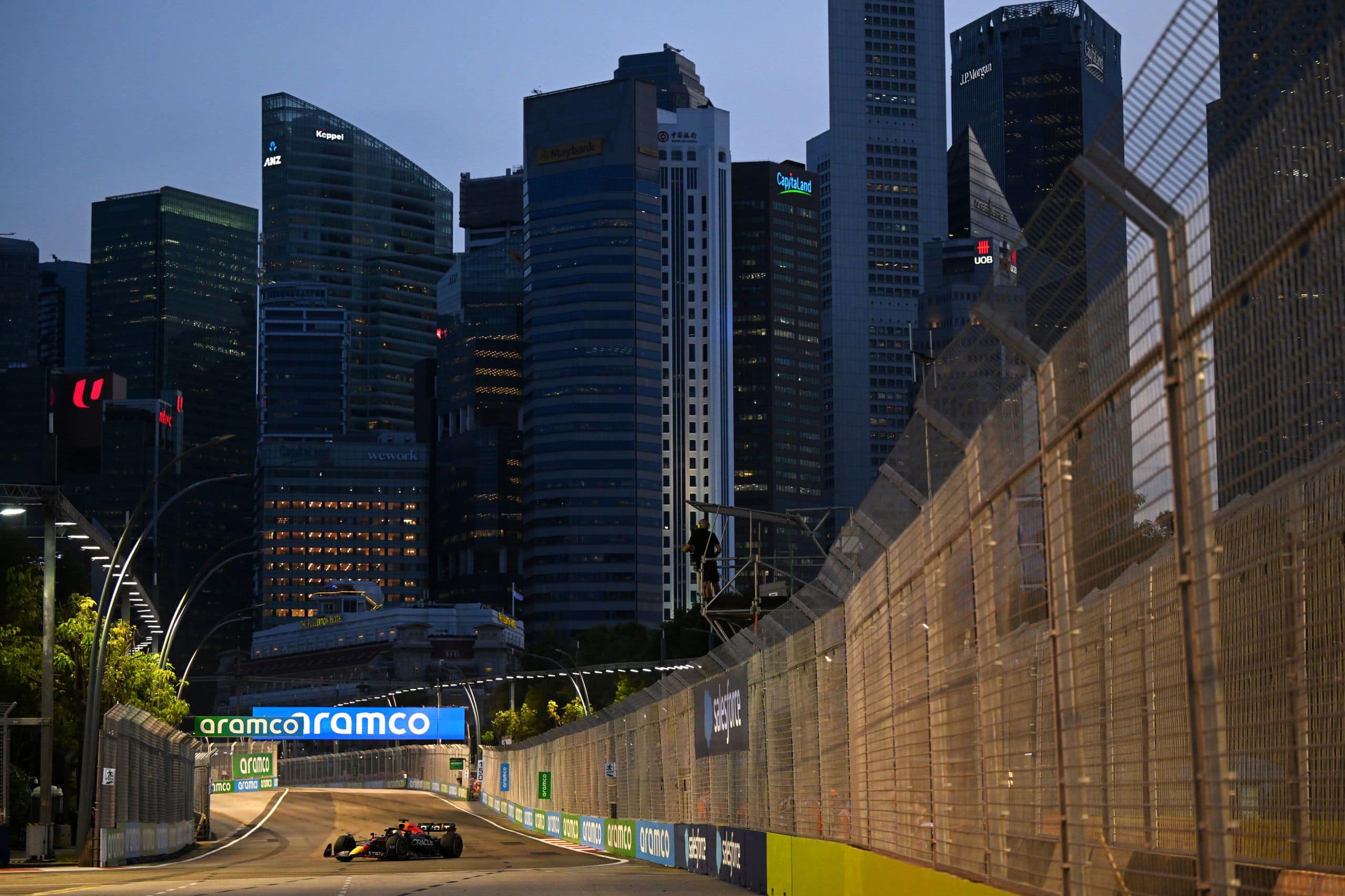
Delving Deeper: The Pros and Cons of F1 Night Races
Formula 1 night races, like the Singapore Grand Prix, provide a unique and exhilarating experience for both drivers and fans alike. However, there are a number of pros and cons that come with racing under the floodlights, which are worth considering.
Challenges faced by drivers during night races
Night races inherently bring about different challenges for F1 drivers. Reduced visibility and the need to rely on artificial lighting can test a driver’s spatial awareness and ability to make split-second decisions. Furthermore, cooler track temperatures can impact tire performance, requiring drivers to adapt their racing strategies accordingly.
Mettle and skill of F1 drivers during night races
Night races are highly competitive, pushing drivers to the limits of their skills and mental fortitude. In order to excel in these conditions, drivers must possess exceptional levels of concentration, precision, and adaptability. Racing at night is both physically and mentally taxing, but the spectacle of cars flying around a brightly lit circuit showcases the true prowess of these athletes.
Skills required for excelling in night races
Drivers need an extensive skill set to succeed in night races. These skills include excellent hand-eye coordination, a deep understanding of their car’s performance in varying conditions, and the ability to adapt their driving style to manage tire wear and grip. Additionally, night racing calls for precise communication between drivers and their teams, as the constantly changing track conditions require frequent strategy adjustments.
Differences between night and day racing from a driver’s perspective
From a driver’s perspective, night racing differs significantly from day racing on several levels. The reduced visibility and reliance on artificial lighting demand heightened senses and reaction times, while the cooler track temperatures necessitate constant adjustments to car setup and tire management strategies. Moreover, the unique ambiance of racing under floodlights can affect focus, making it essential for drivers to maintain their composure and intensity throughout the race.
In conclusion, F1 night races, such as the Singapore Grand Prix, present distinctive challenges and opportunities for drivers. They test their skills and mettle in unique conditions while providing an exciting spectacle for fans and viewers. As a result, night races will likely continue to hold a special place in the Formula 1 calendar for years to come.
Why the F1 Calendar Features Night Races
Night races have been introduced to the Formula 1 calendar for several reasons, one of which is to accommodate different time zones, particularly for European audiences. Holding races like the Singapore GP at night allows these events to be broadcast during daytime hours in Europe, thus maximizing viewership for international audiences. This strategy helps increase the sport’s popularity and its global reach.
Another reason for the inclusion of night races is the added variety and excitement it brings to the F1 season. Racing under the floodlights creates a unique atmosphere and enhances the visual spectacle of the race, providing a fresh and thrilling experience for both drivers and spectators. Night races often showcase new challenges for drivers, such as changes in track temperatures and visibility, adding an extra layer of intrigue and unpredictability to competitions.
Despite their attractiveness, there are only a few night races featured in the F1 calendar. This can be attributed to the logistical and organizational challenges associated with organizing races in the dark. Establishing a suitable venue with adequate infrastructure and lighting is critical for the safe and successful execution of a night race. Street circuits, like those in Singapore and Bahrain, require massive investments in temporary lighting solutions and safety precautions to meet these requirements.
Night races also pose unique environmental and operational challenges. For example, the installation of high-powered floodlights can lead to a significant environmental impact by consuming a vast amount of energy. Additionally, marshaling a race during the night may require increased staffing and resources to ensure driver and spectator safety.
In summary, night races have been introduced to the F1 calendar to accommodate different time zones and enhance viewer experience while adding variety and excitement to the season. However, due to the logistical and organizational challenges associated with hosting races in the dark, there are currently only a few night races featured in the F1 calendar.
Final Thoughts: Why the Singapore GP Remains a Night-Time Affair
The Singapore Grand Prix, often referred to as Formula 1’s Night Race, is a unique event on the F1 calendar. The decision to hold the race at night is primarily aimed at accommodating European television audiences. By conducting the race late in the evening local time, it aligns with an afternoon TV slot in European countries, which has always been a significant fan and revenue source for the sport.
Moreover, racing at night creates a more comfortable and cooler environment for both the participants and spectators, as Singapore’s daytime temperatures and humidity levels can be quite challenging. The cooler track conditions also provide a different challenge for the drivers and teams, as they need to be more strategic in tire and car management, thereby adding an extra dimension to the race.
The nighttime setting adds to the mystique and allure of the Singapore GP, being held on the Marina Bay street circuit, which beautifully showcases the city’s iconic skyline. The street circuit, illuminated by thousands of powerful lighting equipment, becomes a dazzling spectacle for the fans and adds a sense of drama to the race.
In summary, the Singapore GP remains a night-time affair mainly due to practical reasons, aimed at maximizing viewership and providing a more comfortable racing environment. However, the incredible nighttime atmosphere of this event also adds a touch of glamour and excitement, making it a truly unforgettable experience for fans and participants alike in the Formula 1 world.
Why do they race at night in Singapore? – Frequently Asked Questions
What are the advantages of night racing in Singapore?
Night racing in Singapore offers several advantages. One of the primary reasons is to cater to European audiences, making it more convenient for them to watch the race. The Singapore GP starts at 1 PM Central European Time, which is 8 PM local time. Another advantage is the cooler nighttime temperatures, making the race more comfortable for both drivers and spectators.
How is the visibility for drivers during Singapore’s night race?
Visibility during Singapore’s night race is not an issue as the entire track is well-lit with powerful floodlights. These lights ensure that drivers can see clearly and maintain their racing performance, without compromising on safety.
What measures are taken to ensure safety during Singapore’s night race?
Safety is a priority for any Formula 1 race, and the Singapore GP is no exception. The Marina Bay street circuit is fitted with proper lighting systems to ensure adequate visibility on the track. Additionally, all racing teams are required to adhere to stringent safety standards, and race organizers work closely with teams to ensure their safety measures are effective.
How do weather conditions affect night racing in Singapore?
Weather conditions can impact the Singapore GP, especially since the city-state experiences a tropical climate. This makes it susceptible to rain, thunderstorms, and high humidity levels. Rain can make the track slippery, creating challenging racing conditions. However, teams are prepared to deal with these conditions and make necessary adjustments to their race strategy and car setup.
What are the challenges faced by teams during Singapore’s night race?
One of the challenges faced by teams is adjusting to the night race schedule, as practice sessions, qualifying, and the actual race take place during nighttime hours. Additionally, weather conditions like unpredictable rain or high humidity can present challenges to a team’s race strategy. It requires teams to be adaptable and quickly adjust to changing conditions as needed.
How has hosting a night race impacted Singapore’s F1 tourism?
Hosting a night race has significantly boosted Singapore’s F1 tourism. The event attracts thousands of spectators from around the world, generating substantial economic benefits for the city. In addition to the race itself, it has also led to numerous ancillary events and activities, further enhancing the appeal of Singapore as a Formula 1 tourist destination.
Is Singapore always a night race?
Yes, since its introduction in 2008, the Singapore Grand Prix has always been a night race. It was the first Formula 1 race to be held under floodlights and has maintained this timing to cater to European audiences.
Is Singapore F1 only night race?
No, Singapore is not the only night race in Formula 1. Other circuits, like the Bahrain International Circuit and Yas Marina Circuit in Abu Dhabi, also host night races. However, the Singapore GP is particularly famous as the original F1 night race and for its unique street circuit setting.

